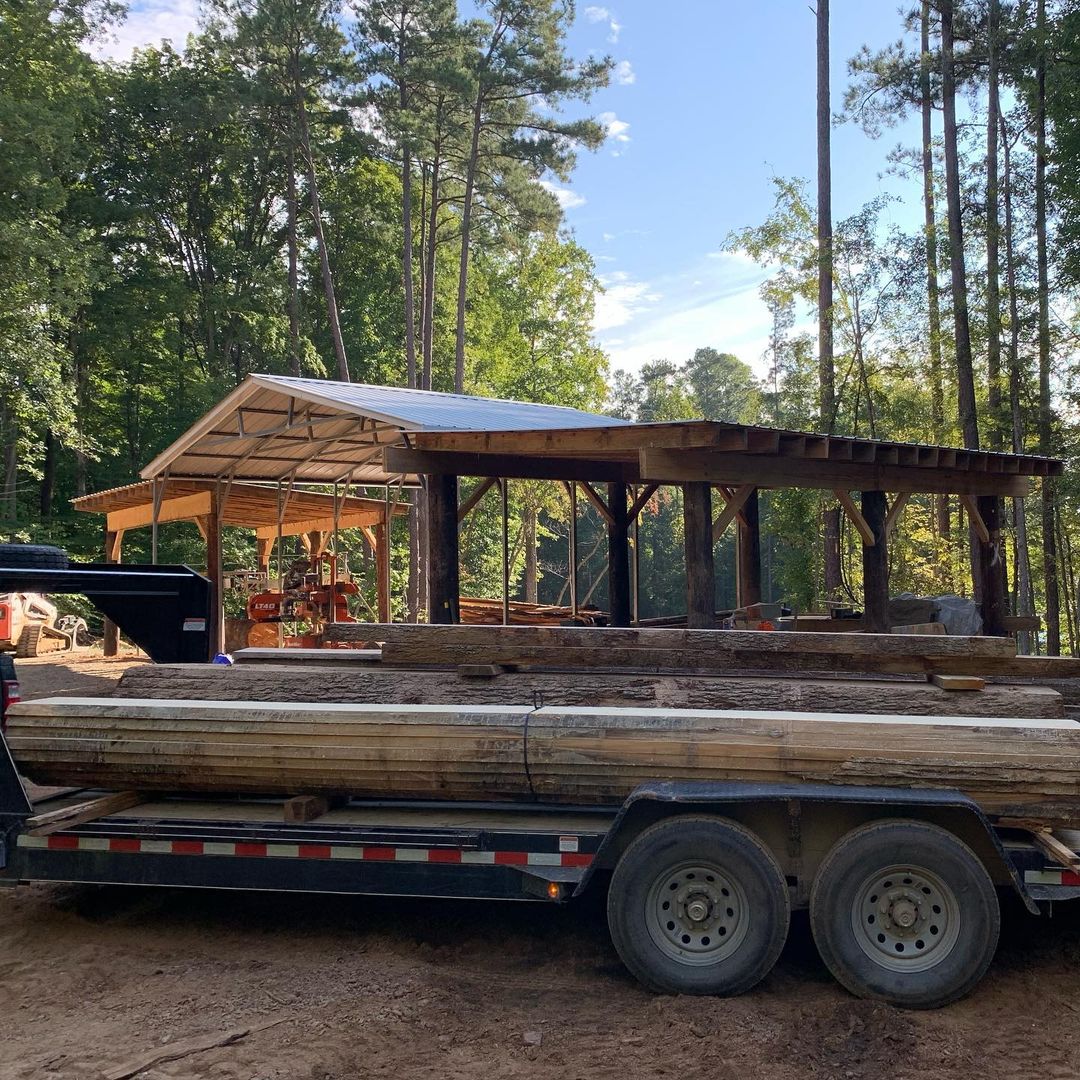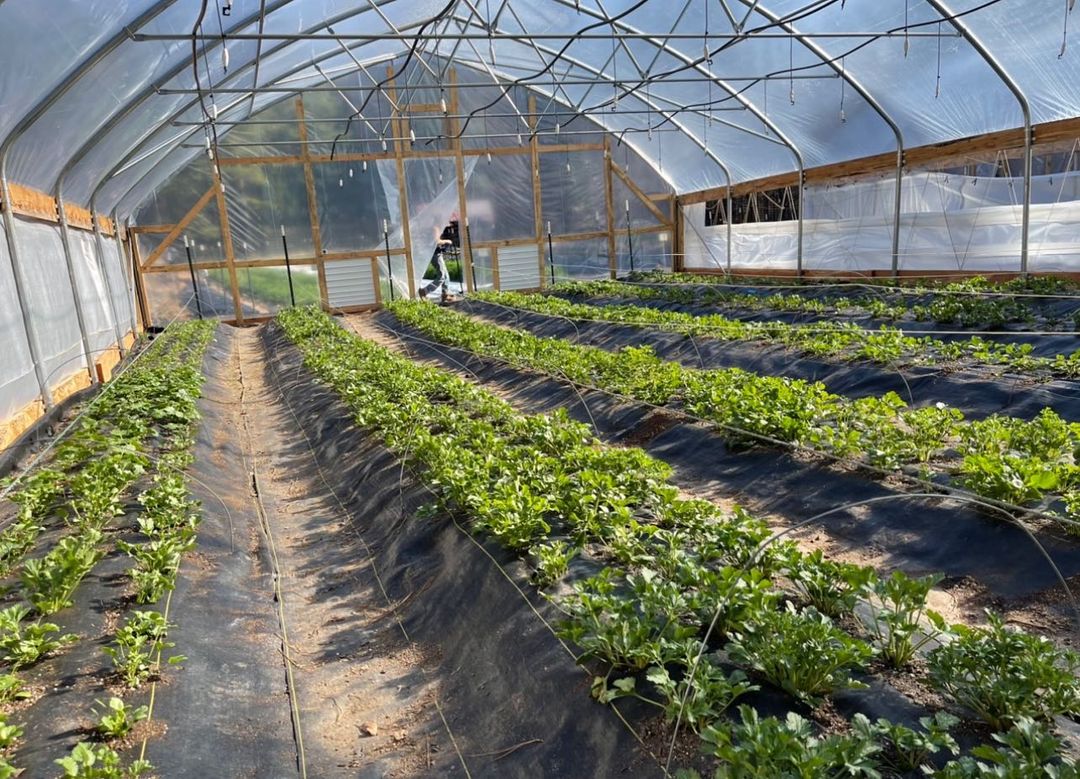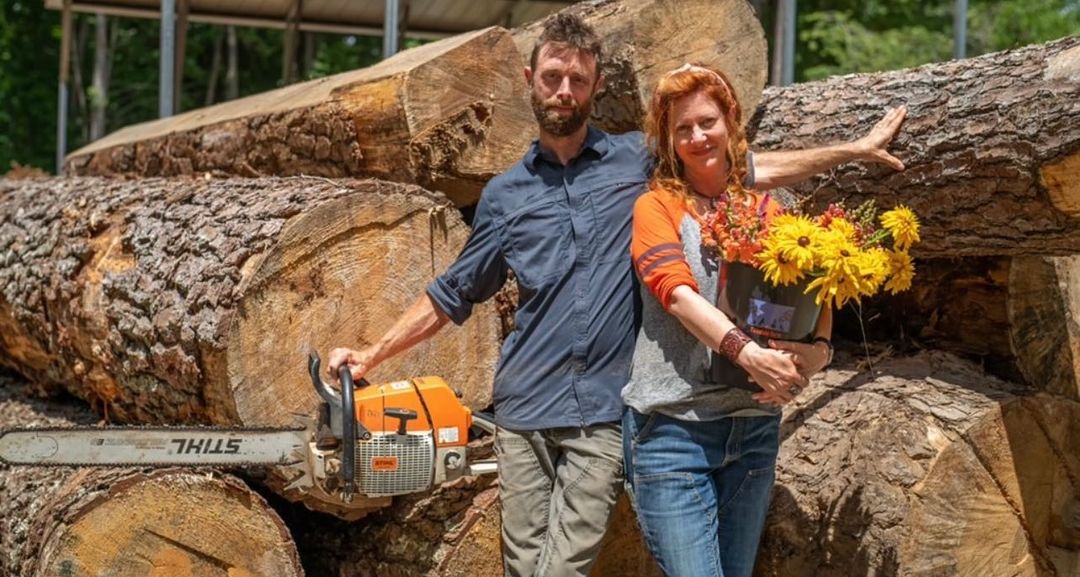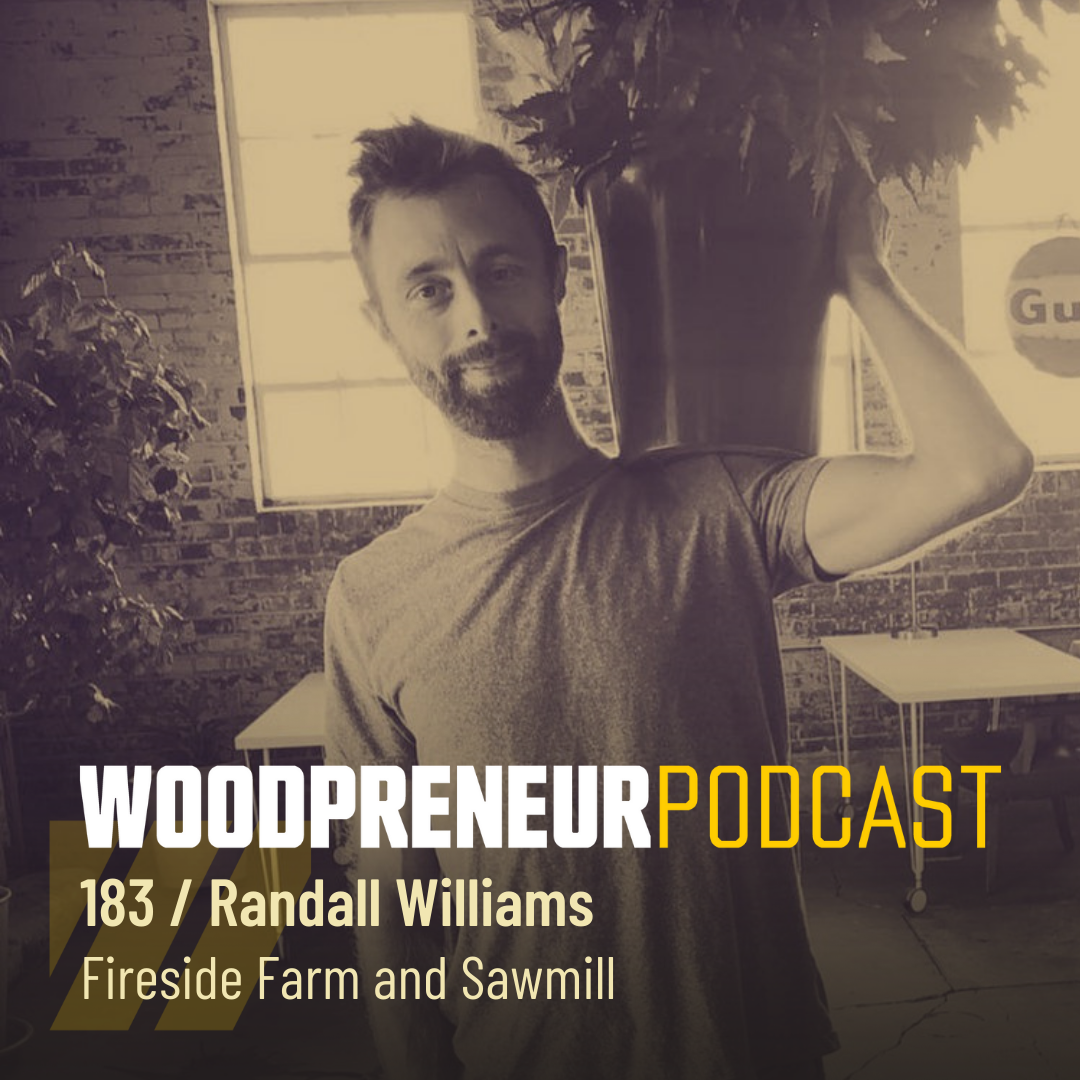Randall Williams: Fireside Farm and Sawmill
Welcome to a brand new episode of the Woodpreneur Podcast. Today’s guest is Randall Williams from Fireside Farm and Sawmill. Randall explains that the farm side of the business started first when he and his wife moved to a nine-acre homestead together. They were both teachers and wanted to live a life around growing food, raising livestock, and tending to their community.
When they first moved, Randall had some difficulty with some giant pine trees right behind the house. So he called a forester to come and look at them, and then a logger who said the only option was to clear cut the area. That option horrified Randall, so he decided to fell and mill the trees himself.
One of his neighbors who owned a sawmill came by to consult with Randall, and he said that it was possible, but it would take a long time. So he sold Randall his old sawmill, which Randall then used to start milling all of that lumber for use around his property.
“At that point, people started bullying me to mill their lumber. At the time, I was teaching at a Quaker school in Durham, and on the weekends, I was milling lumber for other people. That kind of started the process where I started selling lumber and then coming up with a fee structure to mill for other people.
In 2017, my wife and I left our jobs teaching and went all-in on the farm. And at that point, I ramped up the sawmill operation, which has been going full time for the last four years. Nowadays, I run the farm operation, and my wife grows cut flowers mainly for weddings.”
- Randall Williams

Building up the Business
In Randall’s mind, two significant things have been instrumental in building his business. The first is that he and his wife have been members of their local community for 25 years, and spending all that time teaching has allowed them to connect with many families.
The second thing that Randall credits for the success of his early business development is his transparent fee structure. He lays out all of the customer costs on his website so that customers can see exactly how much a project is going to cost.
This transparency benefits teaching people who are unfamiliar with the costs of milling lumber and being upfront with their educated customer base. Randall has an entire section of his website dedicated to the formula for his estimates with spreadsheets to provide even more granular detail.
“I think it was really important to me, in the beginning, to get my cash flow started. And what’s funny is that three years in, I began to realize that I was actually making more money milling than I was in that upselling of the live edge slabs.
That happened because of the externalities that I was not accounting for when it came to woodwork—doing woodwork, having a meeting, talking with the client about design, then making it, delivering it, and all of that stuff. I was losing my time.
Until I can streamline my woodworking business, I just put it on pause. I’ll re-integrate that at some point, but there’s enough cash flow for me right now, in sawmilling, that I don’t need to take on custom woodworking projects.”
- Randall Williams

Having Layers to your Business
One crucial element of business, and life in general, that Steve points out is building things in an antifragile way. The idea is that if you create a company with stopgaps in place, if something goes wrong, you will have the time and ability to adapt. In Randall’s case, thanks to the complimentary two-faceted aspect of their company, they can cover for unfortunate circumstances on either side.
“To speak to that antifragility kind of mindset; Our businesses are complementary in the sense that flower production is subject to the weather. So we can have a hurricane come through and knock us out during October, which is our busiest wedding season.
But that same hurricane that comes through also increases my business because of all the trees that come down. Then when it’s July, and I’m like, “Man, It’s 105 degrees outside, I’m not feeling it,” her business is rocking and rolling, and the flowers love it. So it’s nice to have two incomes that work together.”
- Randall Williams

Steve’s Advice Corner
“I want to tell you about the philosophical reason why I transitioned away from building tables and to doing framing lumber. We’re in the midst of a housing crisis in America where the median home is $360,000, and the median home price in my area is $460,000.
So, when I look at my sawmill, it’s a tool that can be used for a lot of different purposes. I could build a 17-foot walnut table, and it will be an heirloom piece that would be appreciated by that family in that living room. Or I can take on the challenge of using my sawmill for diverting lumber from the waste stream, turning it into an optimal product, and then figuring out how I can offset lumber costs for first-time homebuyers.”
- Randall Williams
This mission is vital for Randall because he lives in a farming community, and he sees eager young people purchase land, spend money cutting down trees, and go to big box stores to buy lower-quality lumber. He wants to give sawyers the right to self-certify their own lumber for re-coded building construction to change the local industry.
The first piece of advice Steve offers is for Randall to join the Urban Wood Network and then begin uniting sawyers in his area with a sense of community and purpose. He advises Randall to hold a party with every sawyer in his area and then discuss his plans to change the local legislature.
Website: https://www.firesidefarm.com
Instagram: @firesidesawmill

